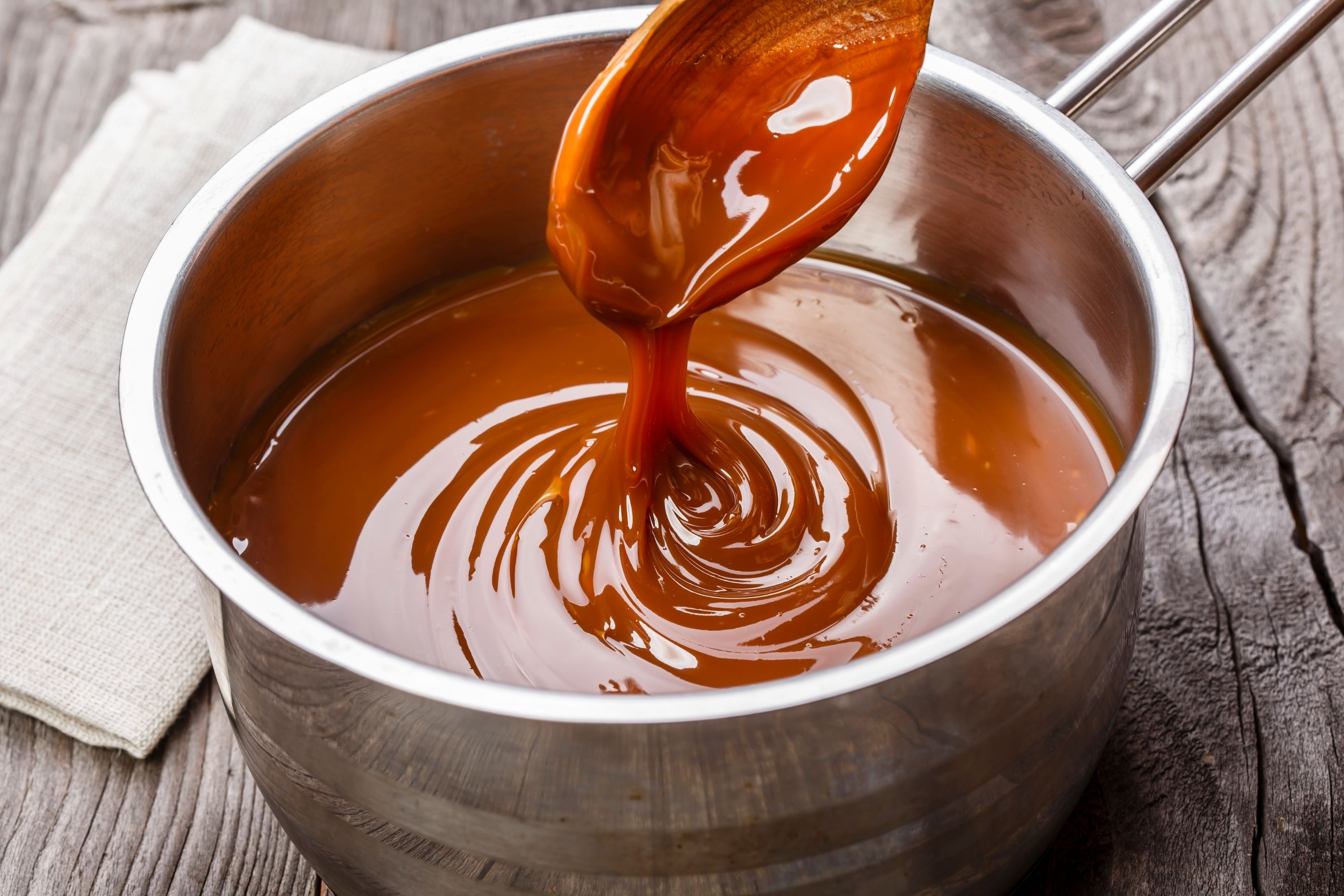Sausage gravy is the optimal meal not only for breakfast but basically for any time of the day of a year. However, one huge problem with this super handy dish exists: we can almost never make the precise amount of it.
It is either too much of the gravy left, or we run out of it too soon. And if consuming it too quickly is more or less fine (we can always make more), then having the leftovers might be an issue.
So, can you freeze sausage gravy? Yes, you can freeze sausage gravy for 3 months. At first cool sausage gravy at room temperature, then put it into the proper container, and then put it to the freezing camera. You should use a proper freezer-friendly, air-tight plastic container and seal it properly.
How to keep the gravy so that it remains fresh? How to preserve it if needed? We will explain how to keep the leftover sausage gravy and how to reheat gravy correctly to save the taste and flavor.
What is Sausage Gravy?
Sausage gravy is a simple yet very nutritious and tasty food that many families have as a staple on their dinner tables. But what is sausage gravy exactly as a dish? Is it a main course, a side dish, or a sauce? Let’s try to figure this out!
So, in simple words, sausage gravy is made by frying off loose sausage that has been removed from its skin. Then, you need to make use of the residual fat in order to mix it with flour and form a roux.
Finally, at the last stage of the gravy-making process, milk must be added to get a sauce-like consistency, and of course, let’s don’t forget about seasonings for some extra flavor and taste! At the very end, sausages are added back to the frying pan, and this is when the sauce can be considered fully complete.
So basically, as you can see, sausage gravy is closer to sauces rather than to main or side dishes.
Making The Best Sausage Gravy
Before we proceed to actually the preservation and storage instructions, we would like to share a basic recipe for this dish with everyone. It is needed not only for being able to prepare it any time we want but also for learning what this foodstuff consists of. Like this, it will be way simpler to figure out how to keep it and what can prevent us from doing that right.
Gravy is a super-easy thing to make since the whole preparation procedure will take you twenty minutes at most, and it will require the simplest ingredients that are easy to find in any kitchen. An ideal option for a quick meal if you suddenly get hungry.
Consider though that dozens of variations of this recipe exist so feel free to maneuver them the way you like. After that, proceed to the packaging:
- Prepare the ingredients first. The classic is ground sausage, milk, flour, salt, and pepper. Nevertheless, this is not the strict list, so feel free to incorporate some shredded cheese or go for the evaporated milk to make the dish thicker.
- Brown the sausage in a skillet over the medium heat. Cook it throughout but don’t let the meaty stuff dry since grease is what makes the gravy so delicious and flavorous!
- Proceed with adding the flour and accurately pouring in the milk. Keep on cooking the mixture until it gets thicker and start to roll. And remember to stir it all the time, otherwise, you will get ugly clumps all over it!
- Right after the dish starts rolling and it is noticeably thicker, the heat must be brought down. This way, simmer the foodstuff for two or three minutes stirring it non-stop. And the last touch is to sprinkle some salt and pepper over the gravy.
This dish is not only quick to prepare, but it is also easy to stock for future use. This is why so many housewives prefer making more to keep their gravy. At least, it will help to not worry about what to make for breakfast for the hungry family!

How Long Does Gravy Last?
Naturally, since this foodstuff is often kept for future consumption, a reasonable question may occur: how long is gravy good for? How long, in fact, can you keep gravy in the fridge?
Well, even though this foodstuff can not be considered very long-lasting, it can easily stay edible for nearly five days.
Respectively, frozen gravy lasts for approximately four months. During this period of time, it will be of the highest quality after defrosting, however, if you are OK with some minor taste degrading, don’t be afraid to keep it frosted for up to half a year, but the more extended preservation is highly not recommended.
[table id=78 /]
We would also not recommend placing this dish to the refrigerator in the same pan it was cooked in. It has nothing to do with the term of use, it is just very uncomfortable to take so much space instead of replacing the content in a smaller tank.

Can It Go Bad?
Just like any other foodstuff, sausage gravy will expire one day. Whether it will happen soon or not hangs upon how we stock it.
If we mess up with the storage environment or conditions, we should expect the dish to spoil and degrade. To note that something went wrong, no special skills are needed:
- rotten or unpleasant odor
- watery structure
- separation of the ingredients
- changes in color
- clarity decay
these are all the signs of your gravy getting bad gradually. Do not make attempts to save the foodstuff since meaty dishes can be quite dangerous after they already started spoiling. Better discard it and make a new one since it is so simple to do.
How to Store Gravy?

If you tend to make too much gravy often, you might already have a question of what to do with leftover sausage gravy. Well, the most reasonable way is to stock it if, of course, you are not able to finish it yourself or your family is not big enough to feed the dish to it until the next evening.
Considering how long this foodstuff can be kept, and easily it is prepared, some people might think that storing gravy is not a big deal. Nevertheless, we would like to warn you: like any foodstuff, sausage gravy needs attention and care when it comes to keeping it.
We can’t just toss the dish into the fridge and expect that it will be the same delicious next time we remember about it and take the pot out.
But don’t be afraid: no complicated preparation procedures are needed to make gravy last to its longest successfully! Simply prepare a hermetic tank with the tight lid, place the goodie inside, seal, and leave it on the shelf of the fridge.
Remember though that it must cool down first, otherwise, a high risk exists of harmful bacteria developing faster than expected!
Some people might have an idea to leave the gravy out but please, avoid doing that! This foodstuff can spend only about an hour unchilled in order to be cooled before storage. If left for a longer period of time, it will develop bacteria that will lead to spoilage.
Only the commercially made gravy can be left in a pantry for up to a year if unopened, but this is the only exception.
How to Freeze Gravy?
Since sausage gravy is pretty easy to freeze, many housewives and home chefs tend to wonder how frost will affect the taste and the texture of the sauce. So, if you are curious about the taste and the texture your sausage gravy might have before and after freezing, grab this information.
First of all, you need to know that sausage gravy does not tend to lose its taste or texture while it’s being frozen! The foodstuff freezes pretty well, and even though it might seem that the gravy is split a bit after you take it out of the freezer, don’t worry. The sauce will return its consistency and appearance once you reheat it.
This is the main reason why people like freezing it in large batches! See, sausage gravy will freeze great even if you used previously frozen sausages for making it!
But what about the gravy that’s made with the use of milk or cream, you might wonder?
Will this one freeze the same well? Unfortunately, even though gravy is great for freezing in general, we can’t say the same about the dish that contains milk or cream. It is impossible simply because the milky ingredients will make the gravies separate during the defrosting process!
Using up leftover gravy is also possible since this foodstuff is really versatile! You can simply eat it with toasted bread or biscuits, but if you want something more exquisite, try making a shepherd’s pie, add the gravy to casseroles, use it as spaghetti sauce, and many more!

Naturally, since gravy can be quite durable when frozen, people ask the same question: can gravy be frozen for later use safely? Does gravy freeze well at all?
Relax, ladies, and gentlemen, we are here to assure you: sausage gravy can perfectly be exposed to frost without any negative consequences!
Freezing gravy is possible, and moreover, it is very simple.
- To freeze sausage gravy, allow the recently cooked foodstuff to cool down first. It must not be hot or even warm. However, since it contains meat and dairy components, try not to leave it out for more than one hour.
- Scoop it into the hermetic tank or go for a thick frost-resistant packet. Anyway, the container, no matter hard or soft, must not allow air to get inside of it. This will save the content from freezer burn and sooner spoilage.
- Before sealing it, double-check that about an inch of empty space is left between the content and the top. In case gravy decides to expand, it will at least not break the tank.
- Finally, now the goodie can be safely transported into the frosting camera.
The good thing about this dish is that the same procedure can be used for preserving frozen biscuits and gravy, only this variation of the dish must be frosted separately: biscuits are better to be placed in a separate tank, otherwise, they will get mushy after defrosting.
And of course, it will be better to label the tank indicating the date when its content was preserved. Like this, you will know when to expect the spoilage.

How to Reheat Sausage Gravy?
Reheating foods properly is a must since it influences the way your dish tastes and looks when being served. And most of us prefer not to cook too much simply in order to avoid reheating later! However, with the sausage gravy, things are a bit simpler.
- As for reheating your sausage gravy after freezing, it’s best to be done on the stove. Simply pour the gravy in a pan and reheat it on low heat while stirring slowly. Like this, you will avoid clumps and the sauce will not burn. If you find the sauce to be a bit thick, feel free to add some water or milk.
- Your sausage gravy can also be reheated in a microwave! Just heat it on high for one minute at time and remember to stir between the heating sessions to avoid hotspots. Usually, it will take you three or four rounds to fully reheat the dish.
- How do you thaw frozen sausage gravy? It’s easy! Just put the sauce into the fridge overnight. But if you are thawing a very large portion, you’d better give it some extra thawing time!
No wonder that sausage gravy is so popular! With such simple thawing and reheating rules, this foodstuff is always there for you to enjoy!

So, we have our delicious frozen sausage gravy now. But sooner or later it will have to be taken out of its icy “home” for being consumed. And here we are approaching the most troublesome step in preserving foods: How to reheat gravy safely without ruining the dish?
Despite this inquiry is very popular regarding lots of other foodstuffs, and often it does require certain skills in order not to mess up with the food, gravy is a lucky ticket for any home chef.
It can be warmed up even without the prior fridge-defrosting, and reheating can be performed in two different ways, and we will provide everyone with both:
How to reheat gravy on the stove?
This one is the more preferable method. Place the gravy into the skillet or a pan, and heat it up on the medium heat until the foodstuff starts being bubbly. If it is too thick, feel free to add some milk to make it more liquid.
Microwaving
This is another, faster method of reheating gravy. It will require a microwaveable bowl: simply place the foodstuff into it and warm it up in thirty-seconds intervals stirring it after each round. Stop heating when you notice the dish reached the desired temperature.
Both approaches are fine since the gravy will stay the same delicious with no texture changes. However, we would not recommend doing that repeatedly since it will make the foodstuff spoil way faster which can result in problems with the stomach.
Extra Nuances to Remember
Gravy is simple and durable, but it is always good to be informed about any possible nuances just in case.
What to do if it is not thick enough?
Simply add more flour (or better, go for a flour/water paste) to thicken the dish. Don’t incorporate too much, though, to not make it excessively clumpy.
What to do if my gravy is too thick?
No panic! Simply dissolve the substance with milk or water until the desired consistency is achieved.
Will it thicken when cold?
It will not turn into a meaty brick! Yes, the dish will get a bit thicker when refrigerated but it will soon become normal again if we let it warm for five minutes before serving.
How to eat it?
Well, except for biscuits and gravy, try to serve it with roast, steaks, casseroles, or meatballs.
What happens if I use water instead of milk?
Milk gives thickness, so if we replace it with another liquid, the consistency will suffer. Try to make use of dairy-free product or evaporated milk.
We shared the basics of freezing sausage gravy, told you how to stock it correctly to save the taste and flavor of this juicy meaty dish, and explained how to prepare it so that everyone could enjoy this simple yet tasty meal with their close ones.

Summary
Sausage gravy is a simple dish in all senses. It is easy to cook, it uses affordable and cheap ingredients, and it doesn’t take much time to get it ready.
In addition, it is extremely easy to reheat! But the biggest benefit of it is that sausage gravy (well, except for the one made with milk or cream) can be easily frozen! That means you can always make a whole batch to enjoy it later and not worry about cooking.
However, even such a simple foodstuff needs proper treatment. Make sure you store your gravy correctly both in the fridge and in the freezer, and you will surely extend its lifespan to the maximum.
[wp-faq-schema title=”Frequently Asked Questions”]

Can you freeze mashed potatoes and gravy? I never tried it so I’d like to know about your experience. Does it work?
Hi! Yes, it works perfectly! In fact, I think it is the best way to freeze mashed potatoes.
Can you freeze KFC gravy? Is it worth trying?
Absolutely it’s worth trying! It freezes the same well as the homemade dish.
I recently found a packet of frozen sausages. Can you eat sausages that have been frozen for a year? Or maybe it’s better to discard the stuff?
I guess you can eat it since frozen sausages last almost indefinitely long. I never kept tham so long simply because we finish them too fast!
Can I freeze gravy made with cornstarch? Will it not get clumpy?
I’d not recommend doing that: cornstarch makes food get spongy so I suppose you would not like tasting it.